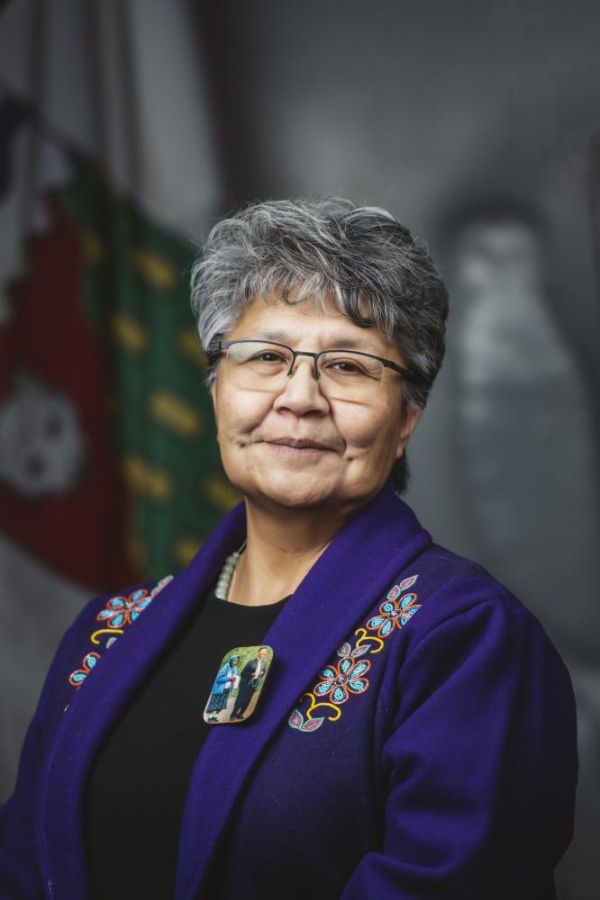Debates of October 27, 2022 (day 127)
Question 1241-19(2): Crime

Thank you, Mr. Speaker. Mr. Speaker, the NWT is known as a leader in one area, unfortunately that area is with respect to the national crime rate. Since 2005, except for a small blip, we have been in first place. However, Mr. Speaker, when it comes to justice, we all have a part to play, whether we're a parent, teacher, health worker, police, judge, lawyer it doesn't matter. So Mr. Speaker, I'd ask the Minister of Justice if he can confirm what the resulting factors are that have contributed to the increase in the NWT crime rate while we see the correctional centres are showing a steady decrease in population? Thank you, Mr. Speaker.
Thank you, Member for Hay River South. Minister responsible for Justice.

Thank you, Mr. Speaker. That's a big question. I'll do my best to keep my answers short.
So the most recent information we have is from the 2021 calendar year, and that shows us actually a decrease in crime during that time. The total crime rate went down by 3 percent in the Northwest Territories driven by a reduction in robbery, a 21 percent decrease in drug offences, as well as a 7 percent decrease in sexual assault offences. On the other side, we saw an increase in assaults and breaking and entering. But that's 2021, and I know the Member there's issues going on right now in his community and so people want to know what's going on right now. And there's a number of factors that influence crime rates.
Socioeconomic factors, the age of the population. In the Northwest Territories we have a very young population. We have a significant amount of poverty in the Northwest Territories, a significant amount of trauma in the Northwest Territories. And when you talk about crime rate, that means different things. So there's the crime rate, just a pure number of crimes, and there's the combination of the types of crimes. So the crime severity index is one way that we can look at the crime rate by taking into account how severe certain cases are.
The crime severity index in 2021 also dropped by 6 percent, and the youth crime severity index dropped by 23 percent in 2021. So when we say we're seeing an increase in crime, we are there's a general trend. We were following the same trend as Canada up until about I would say maybe five years ago, and then we have continued to increase while the rest of Canada has sort of stayed steady or decreased. But we are very similar to other regions that are similar to us.
So Nunavut and northern Saskatchewan, you can almost map our crime rates, the trajectory, overtop of each other; they almost form a single line so. There's a number of different factors that contribute to the crime rate. And I'll also say that we have twice as many police officers in the Northwest Territories per person compared to the rest of Canada. So just the mere fact that we have that many officers would make you think that we're going to be there's going to be more crimes reported. Thank you, Mr. Speaker.

Thank you, Mr. Speaker. Mr. Speaker, it seems like more and more people are just being released on bail after committing crimes. Can the Minister explain why people aren't being remanded into custody? Thank you.

Thank you, Mr. Speaker, and this speaks to the Member's last question as well. Most of the people who are in the correctional system in the Northwest Territories are there on remand, meaning they have not yet been sentenced.
In the 2010s, there were a number of Supreme Court of Canada cases that spoke to bail and, you know, what was needed in order to detain someone versus to release them. The Government of Canada, in 2019, codified some of that language or those decisions. And now the release of accused persons is the cardinal rule and detention is an exception. So the Criminal Code of Canada and Supreme Court of Canada have both been moving in a direction where it is becoming more onerous on the prosecution, or the Crown, to actually have someone detained while they're awaiting trial. And we can see that in the Northwest Territories here with our numbers.
So between that and COVID, where you didn't want people, you know, crammed in small spaces next to each other, those are the factors that contributed to a decline in the number of people we have in correctional facilities. That being said, we are looking at more precise reasons. So there's a group in justice who is looking into this and hopefully sometime in the new year, we'll have some more concrete information. Thank you.

Thank you, Mr. Speaker. Mr. Speaker, can the Minister provide any direction to ensure people who are in custody stay in custody while being remanded and not let out on bail? Thank you.

Thank you, Mr. Speaker. I could provide direction but no one would listen to me. The decision of whether or not to remand someone, to detain someone when they've been charged, lies with the courts, and so it's the prosecution, the defence, and the courts who make that decision and the courts are independent of course. Here we are in the Legislative Assembly which is one branch, the government is another branch, and the courts are the third branch. And I have no authority over that branch. Thank you, Mr. Speaker.

Thank you, Mr. Speaker. Mr. Speaker, I said that we all had a part to play in curbing crimes and crime rate. You know, without involvement of everybody, we're never going to see change. You know, we have there's a relationship between crime and people's help. So if we're going to do something, we've got to do it together.
So, Mr. Speaker, can the Minister confirm what discussions, if any, are taking place with the federal government on solutions for the NWT to reduce crime rate and make our communities safer? Thank you.

Thank you, Mr. Speaker. And the Department of Justice attends a number of different federal, territorial, and provincial meetings at various levels. So I've recently attended a meeting with the ministers for public safety and ministers of justice across Canada, and these are the types of issues that we discussed, and I will say what the issues that are being raised here are also being raised across Canada. So this is not a territory issue alone.
There is work in different jurisdictions to look at policing and how police services could be improved. There's been recent talk about Alberta moving towards their own provincial police system because they think they can approach policing and crime prevention in a better way. British Columbia, there was recently a report from an allparty committee in the Legislative Assembly that suggested that recommended that they move toward a provincial policing system so that they could take an approach that is more tailored for them. So I participate in those types of federal- territorial-provincial meetings.
As well, there is a number of different working groups that staff from the department are on with the federal and provincial counterparts. So there's crime prevention working groups, drug impaired driving working groups, guns and gangs working groups, and a number of these. So there are a significant number of conversations happening, which is necessary given that the Criminal Code is a federal statute. Thank you, Mr. Speaker.
Thank you, Minister. Oral questions. Member for Inuvik Twin Lakes.













